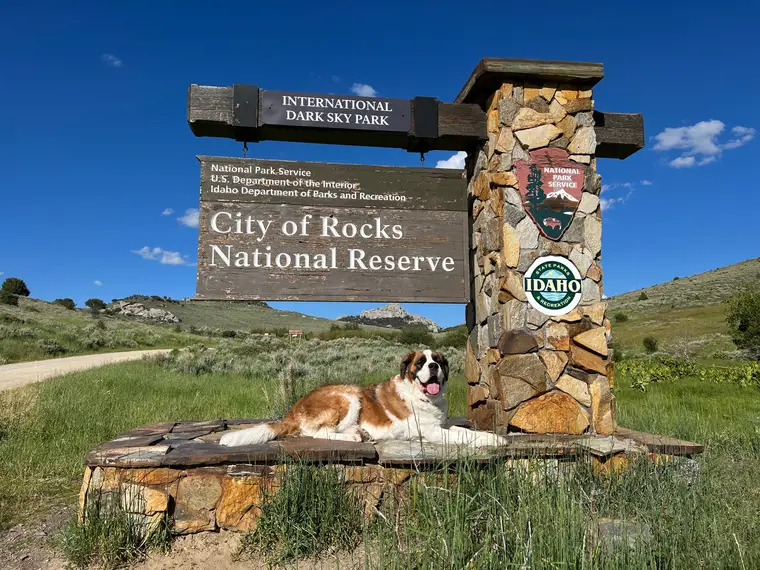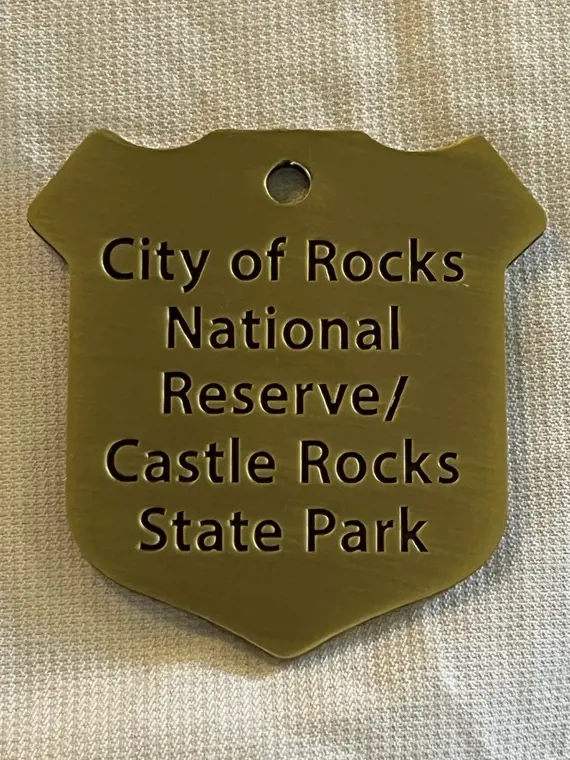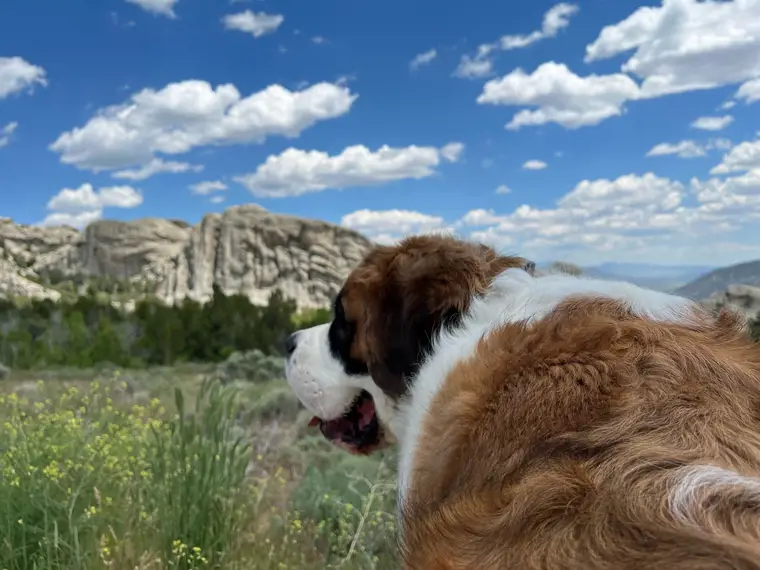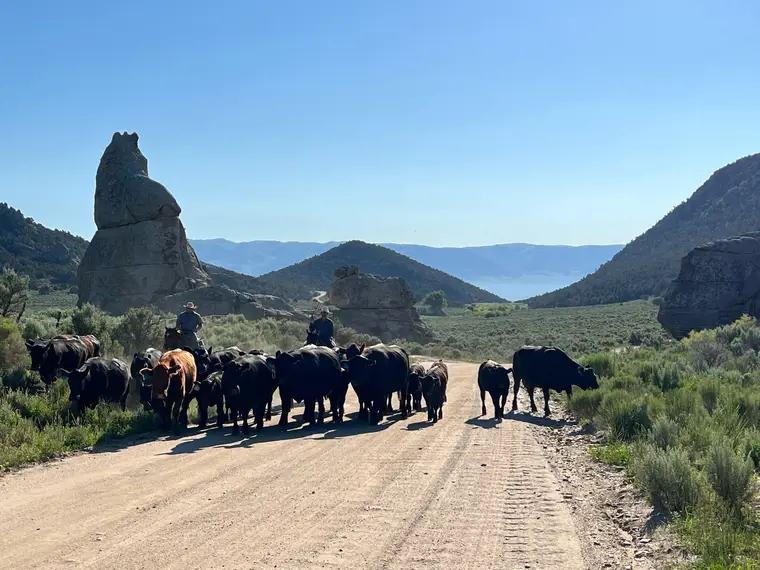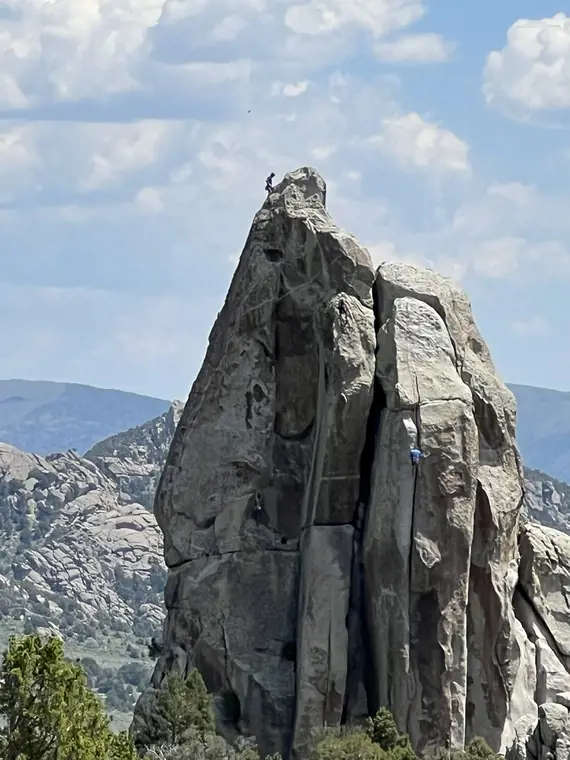City of Rocks Dog Policy
City of Rocks National Reserve is Dog Friendly
City of Rocks National Reserve encompasses mostly backcountry and offers opportunities for adventure in rock climbing, camping, hiking, hunting, and exploration. The site offers incredible granite peaks standing like islands in what might be the high desert (there are plenty of blooming cactus during parts of the year) and is a haven for rock climbers. Because portions of the property were historically owned by private farmers and ranchers or leased for grazing, you might even stumble upon a cattle drive here.
City of Rocks is dog friendly, and dogs are allowed on trails and campgrounds while on a leash. Pets can't be left unattended here. We've heard from one of our readers that this is one of the most dog-friendly NPS sites they've visited, and their dogs were even allowed inside the visitor center!
This location also runs the BARK Ranger Program, where you can earn a special dog tag by learning and following responsible practices (see the BARK Ranger section below).
The National Park Service and the Idaho Department of Parks and Recreation work cooperatively to manage City of Rocks and nearby Castle Rocks State Park. The BARK Ranger tag here has both parks
- Website
- https://www.nps.gov/ciro/index.htm
- Pet Policy Details
- https://www.nps.gov/ciro/planyourvisit/pets.htm
- BARK Ranger
- Yes []
- Hunting
- Allows Hunting []
- Annual Visitors
- 110,203
BARK Ranger
Bark Ranger is a really great program that some National Park Service destinations run. The Bark Ranger program teaches dog owners responsible behaviors with their dogs, and in return you get a special dog tag that’s different for each park (note: some parks require you to purchase the tag at the end). You start the program by going to a park office and picking up a checklist. When you complete the checklist (see the link below for more details), you can get your special dog tag.
B.A.R.K. is an acronym for:
- B: Bag your poop
- Help keep the park clean by bagging and picking up your dog poop, and properly disposing of it. Don’t leave your bagged poop on the side of the trail, hanging from branches, or throw it into the woods. Please note dog poop is not a natural fertilizer — it can carry disease that can spread to wildlife or other dogs.
- A: Always wear a leash
- Dogs must be restrained on a leash no longer than 6'. Retractable leashes that extend beyond 6' are not allowed. Not everyone appreciates a dog running up to them, and many people are scared or allergic to dogs — a leash prevents uncomfortable situations between your dog and others. Leashes also help protect your dog from running off if anything spooks them.
- R: Respect wildlife
- Dogs can chase or scare wildlife such as birds and turtles. They can also damage nesting areas. Some parks have wildlife, such as bears, coyotes, or wolves, that can threaten your dog. Please be respectful of wildlife with your dog, and if you do encounter wildlife, keep dog at distance to protect both your dog and the wildlife.
- K: Know where to go
- Know which trails allow dogs, and which don’t. Don’t leave dogs unattended in vehicles while you go off to hike. See the link below for more details.
We also have a list of all parks that run the BARK Ranger program.
Location & Map
Hunting
Warning: Hunting is allowed at this location. Please be aware of and familiarize yourself with hunting seasons, and exercise appropriate caution with your dog. During hunting season(s), you may also want to consider having your dog wear a blaze orange vest.
For more information on hunting seasons and policies, please see: https://www.nps.gov/ciro/planyourvisit/hunting-and-archery.htm
Have a photo of your dog here?
Note: Policies can change -- please make sure to check official dog/pet policies prior to making plans or booking travel.
Please tell us if you think there’s anything we should add or change on this page.
